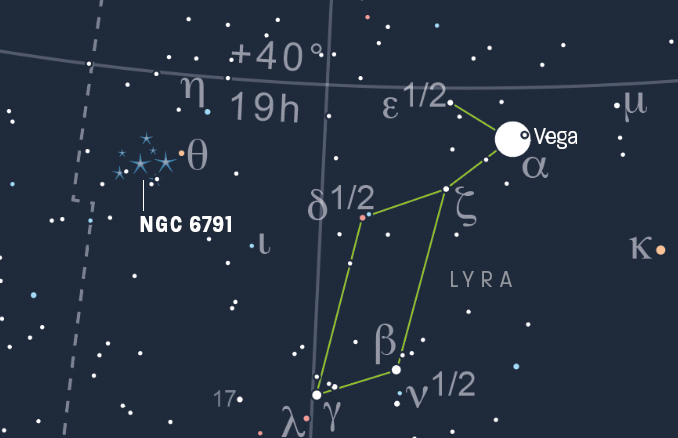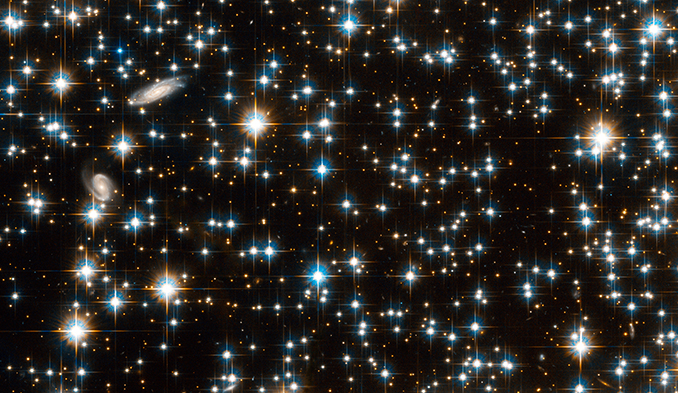
In a summer sky showcasing numerous brilliant examples of youthful and energetic open star clusters lies NGC 6791 in Lyra, a seemingly nondescript open cluster. However, look more closely at images of it and you should remark upon the unusual yellowish tint of its teeming stars, giving it the appearance not of a familiar open cluster but rather of a loose globular cluster, one of those ancient balls of star that have been around almost as long as the Universe itself. Therein lies the clue to its uniqueness; NGC 6791 is an amazingly ancient open cluster, an anomaly that’s held itself together for around an incredible 10 billion years, making it perhaps the second-oldest open cluster after Berkeley 17 in Auriga!

How to observe
NGC 6791 is well placed on August nights; located under 10 degrees east of brilliant Vega (alpha [α] Lyrae), it rides high and can be observed throughout the darkening nights. Theta (θ) lyrae (magnitude +4.3) is a very handy marker, located as it is just a degree east-north-east of NGC 6791.
NGC 6791 shines with an integrated magnitude of +8.2 and spans a substantial 16 arcminutes in apparent diameter. An 80mm (~three-inch) telescope will pick up it up with little difficulty on a transparent and moonless night; The Moon’s phase is favourable until that last week or so of August.
Once you’ve tracked it down, don’t expect to see anything other than an eighth-magnitude fuzz ball, even if you ramp up the magnification. The cluster’s brightest individual member stars, of which there are thought to be close to 400, shine as faint as eleventh-magnitude and are beyond the resolution of a telescope under 250mm (10-inches) in aperture. A ’scope of this size will partially resolve NGC 6791 and increase the cluster to around 10’ in apparent diameter.
Images taken through medium- to large-aperture telescopes can really bring out the ancient nature and unsung beauty of this amazing cluster.





